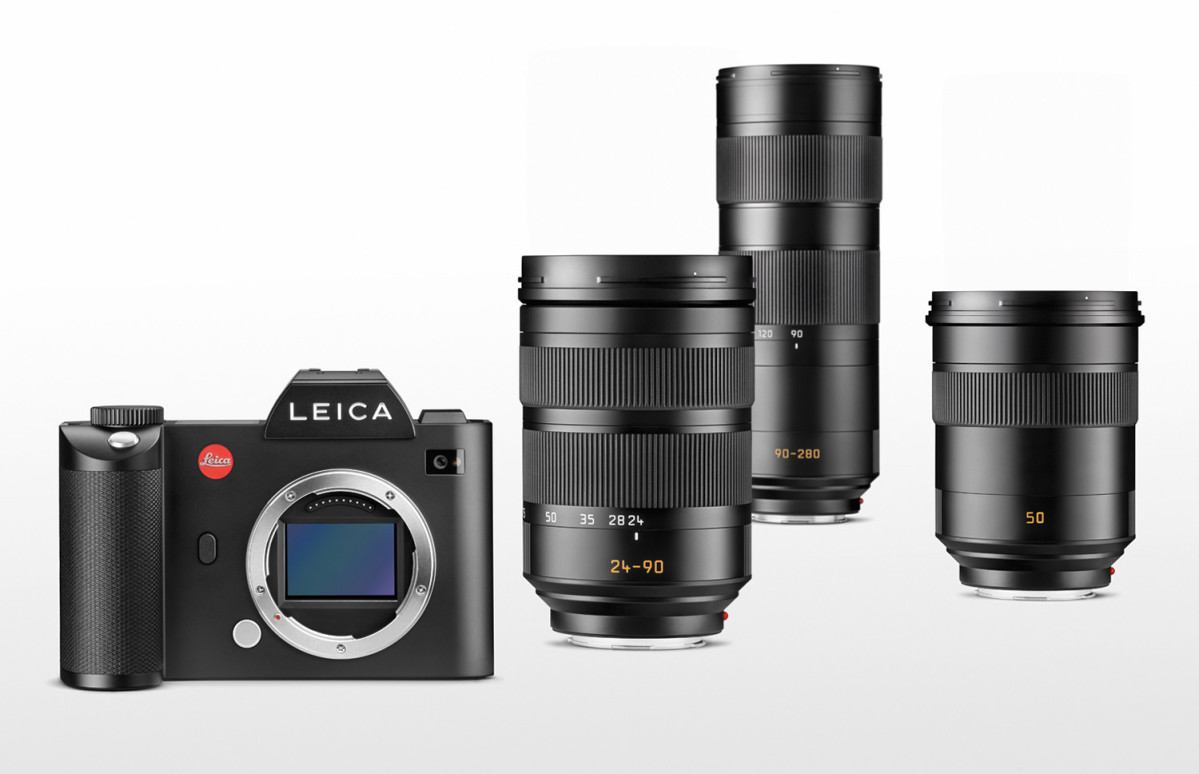Today, in a surprising but welcome move, Leica Camera has reduced the price of the the SL (Typ 601). The popular full-frame mirrorless camera is now $5,995, a $1,455 savings from its original price of $7,450. This eases the entry point into the Leica SL-System, making it more accessible for ambitious amateur photographers as well as professionals interested in switching systems. At just under $6,000, the Leica SL is now in line price-wise with other top-of-the-line professional camera models and opens up the system to more photographers than ever before.
If you're not already familiar with the system, the current SL lens lineup offers truly outstanding performance. The Vario-Elmarit-SL 24-90mm f/2.8-4.0 ASPH and APO-Vario-Elmarit-SL 90-280mm f/2.8-4 zooms deliver prime lens quality with great flexibility. The reference-class Summilux-SL 50mm f/1.4 ASPH sets a new bar for a 50mm lens. And with a host of new lenses on the way over the next two years, including a range of f/2 Summicron-SL fixed lenses, this is certainly an exciting time to be getting started with the SL-system.
If the current and future lineup of SL lenses doesn't meet your specific needs, the camera can be used with a wide variety of other Leica lenses with adapters, such as M lenses, R lenses and even S lenses. Plus, TL lenses can be mounted with no adapter needed. A TL lens setup is perfect when shooting 4K video on the SL, as the 4K Super35 video capture area matches perfectly with the TL lens crop factor on the SL.
If you have not already checked out our full SL review, give it a read here: Leica SL (Typ 601) Review: A Professional Mirrorless Camera. We have also reviewed two of the SL lenses: Leica APO-Vario-Elmarit-SL 90-280mm f/2.8-4 Lens Review and Leica Summilux-SL 50mm f/1.4 ASPH Review.
If you have any questions about the new pricing or the SL system in general, you can email us anytime or call at 305-921-4433.


Is this an indication that a replacement for the SL might be nigh?
I don’t think so. The SL was only introduced 18 months ago as a brand new system, and the lens line is still being developed. The Q is six months older and shows no signs of being replaced. Fact is, Leica’s product cycles are longer now. Four years passed between the M240 and the M10. And, in many ways, the SL is still more advanced than the just-launched M10. From an image quality perspective, performance of the SL and the M10 are extremely similar. Leica has also been diligent about rolling out regular firmware updates for the SL to continually improve the performance and user experience. Bottom line: this is not an end of life product. Rather, it is Leica’s current standard-bearer. Based on other product cycles, I wouldn’t expect to see a replacement in anything less than 18-24 months. And a lot of new SL glass will be rolling out in that timeframe, further bolstering the system.
Mainly, I think the price adjustment is aimed at achieving global price harmonization.
Most likely Leica is not selling the volume of units that they thought they would. The M and M10 (when it’s released) is not that much more money and a better camera with a better selection of lenses.
Why anyone would spend $5000+ on a diginal system regardless of name is beyond me and in my optinion stupid. It will be outdated in less than two years. My M6 and even My IIIc are still chugging along and will never be outdated as long as film is available.
The SL is doing well, especially for a new system. Leica just wants to accelerate this process and make it more competitive to attract those outside the Leica universe.
To your point about the lens selection, the SL is actually able to accept many more lenses than an M camera. These are:
So, quite a few lenses. By my rough count, more than 300 options.
As far as being outdated in two years time, take a look at the M9. The M9 was introduced eight years ago and has an very loyal following, still producing incredible images. Digital cameras don’t get worse with age. They produce the same quality as they did they day they were manufactured. The SL is extremely quick in operation. I can’t see myself needing anything faster than 11 fps. Heck, I only use single shot. At 24 megapixels, the files are large enough to produce stunning 30×40 inch prints. It shoots in low light up to ISO 6,400 with extraordinary quality. And, the 4.4 MP EVF rivals an optical finder. So, for me, I’d say the investment in an SL is much more than a two-year deal. I shot plenty of film before reluctantly transitioning to digital just a little more than 10 years ago. And while film has a certain look and nostalgia for me, I can’t see going back. The quality and flexibility of the SL is so far beyond what I ever was able to achieve with film.